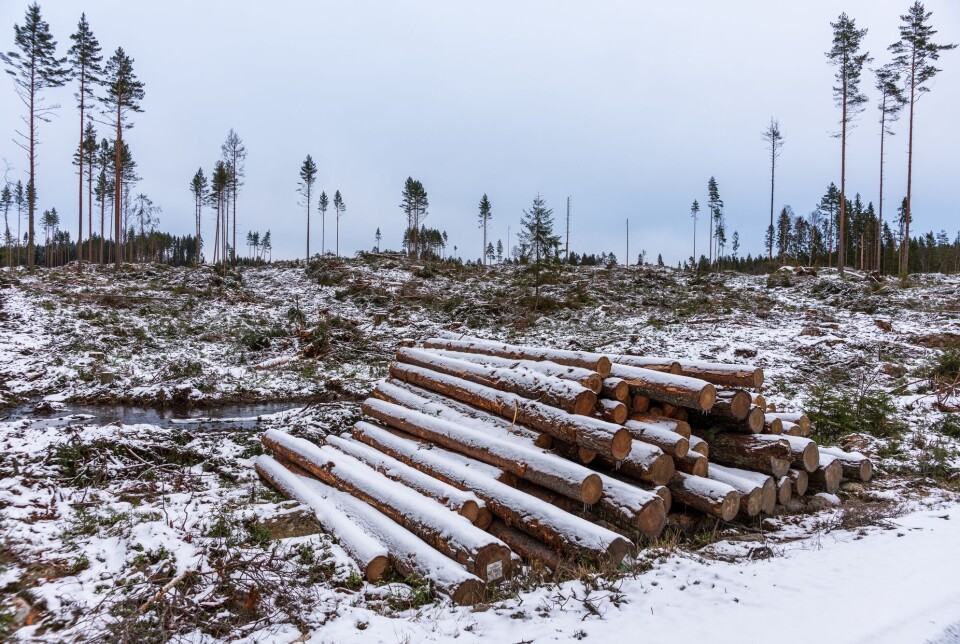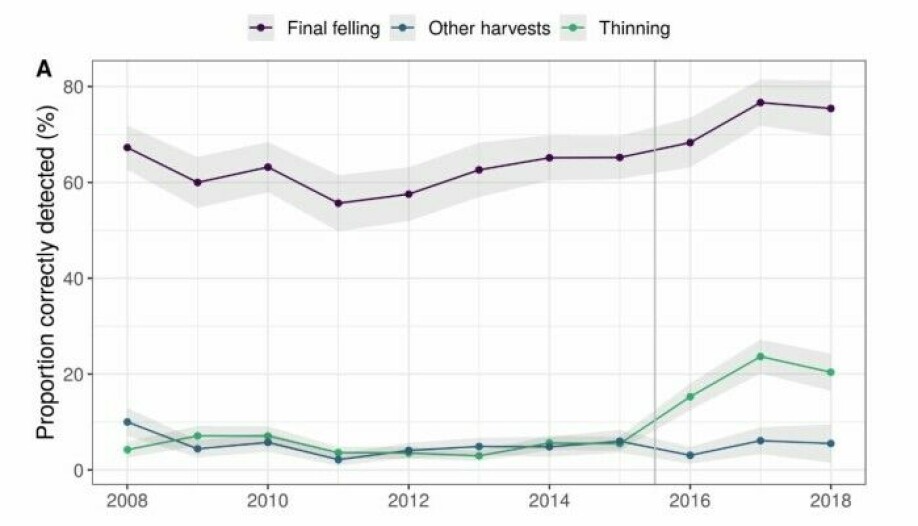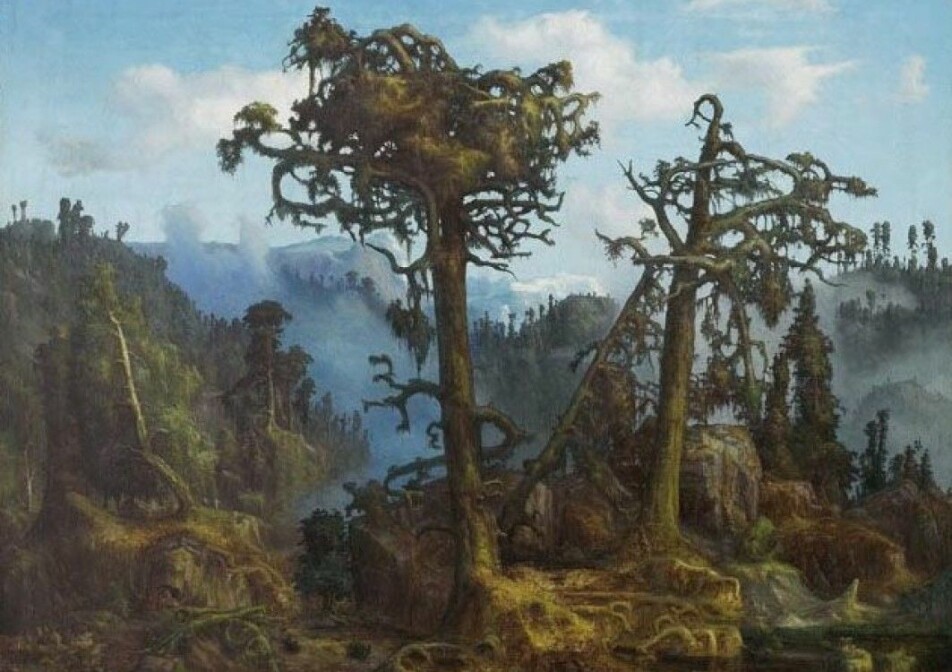
European study found abrupt increase in logging in the Nordic countries. Norwegian researchers beg to differ
They believe the results are due to the fact that satellite-based maps have improved.
There was a sharp increase in logging in the EU between 2016 and 2018 compared to previous years, according to a study in Nature published in 2020. The study was conducted by researchers at the Joint Research Centre, the science and knowledge service for the European Commission.
The biggest changes were found in Sweden and Finland, according to the article. These two countries accounted for 50 per cent of the increase in so-called harvested forest area, areas of forest that are no more.
Johannes Breidenbach, a researcher at the Norwegian Institute for Bioeconomics (NIBIO), reacted to these numbers.

“We were very surprised. That such a large and abrupt change should have taken place without being noticed was completely unexpected,” he told sciencenorway.no.
Political significance
The study from 2020 relied on satellite mapping to examine how much forest had been cut down.
Breidenbach teamed up with colleagues in Norway, Sweden and Finland. They decided to check if the satellite survey gave a correct picture of the situation.
The NIBIO researcher says that the figures have political significance.
“A draft of the EU’s forest strategy stated that clear-cutting should be banned. This is a completely common form of cutting trees in the Nordic countries. If the article had been unchallenged, it is quite likely that it would have been more difficult to oppose it,” he said.
“One of the reasons why we did something was that if such an important decision is to be made, it should be made based on correct and credible figures. I think we shouldn’t cut more trees than necessary, but we also shouldn’t rely on numbers that aren’t correct.”
In a leaked draft of the EU's forest strategy in June last year, it was stated that banning clear-cutting was under consideration. The forest industry in Sweden and Norway strongly opposed the proposal. The European Commission decided that clear-cutting is permitted where it is professionally justifiable.

Could hinder climate change measures
In the Nature study from 2020, researchers used Hansen Maps of Global Forest Change, a mapping tool based on images from Landsat satellites.
These maps showed that there had been a 43 per cent increase in logged areas in the EU between 2016 and 2018 compared to 2004–2015.
“The figures were adjusted down a bit in a comment from the researchers afterwards, but the methodology used in the comment still leads to overly high values,” Breidenbach said.
The biggest changes were in Sweden and Finland.
The researchers wrote in the Nature article that if this trend continues, it would hamper the EU in limiting climate change with the help of forests.
The study received two responses that were published in Nature in connection with the study.

Johannes Breidenbach and his Nordic colleagues followed up on the findings for Sweden and Finland. They submitted an article to Nature with the follow-up, but it was not published there. The study has now been published in Annals of Forest Science.
Checked how well the satellites captured logging
Breidenbach and his colleagues used the national land forest assessments in Sweden and Finland.
The monitoring programmes are organized in the same way as the Norwegian rural forest assessment. Sample areas all over the country are visited over a five-year period, and the forest’s condition is recorded.
The researchers used the information from the land forest assessments to see how well the satellite monitoring captured changes in the same areas.
They used records from 120,000 field observations on 44,000 sample plots.
Technical improvement the cause
“We saw that the satellites became better at detecting logging over time,” Breidenbach said.
There was an especially noticeable change after 2015.
Up until 2015, about 60 - 70 per cent of all logging was identified correctly in the satellite imagery. After that, there was an increase in the proportion of the harvest that was observed correctly.
When the satellite-based maps captured more of the harvest, it made it appear that logging had increased. But the change was really due to an improvement in technology, the researchers believe.
The satellite also became better at detecting where forests had been thinned. This is when forest owners cut down trees to provide better space for those that they want to grow large.
An increase in sawmills
Breidenbach says that official statistics in Sweden and Finland have not recorded any abrupt increase in logging. These numbers are based on an overview of how much timber is sent to sawmills.
“You see a certain increase, but far less than what was reported in the Nature study,” he said.
Guido Ceccherini, who participated in the Nature study from 2020, wrote in an e-mail to sciencenorway.no that he did not want to comment on the matter.
He referred journalists to the study and the material associated with the article published on Nature.
Should have led to higher timber volume
Per Kr. Rørstad is a researcher at the Faculty of Environmental Science and Nature Management at the Norwegian University of Life Sciences, NMBU.
He has not read the articles, but is familiar with the discussion. For the record, he said that he works in the same place as two of the researchers behind the new article.
He thinks the explanation they provided seems reasonable.
“Based on reasonableness, there is nothing to indicate that the logged area should increase as much as the article in Nature shows without it also leading to a significant increase in timber volume,” he wrote in an email to sciencenorway.no.
The felling, or harvest, in Norway, Sweden and Finland has fluctuated around 150 million cubic meters in the last 15 - 20 years, Rørstad wrote.
If the area that has been logged increases without a concomitant increase in the harvest, it means that the forest that has been cut has a lower density of trees. This is unlikely since all three countries have practiced what is called even-aged forestry since about the middle of the last century.
Clear-cutting is part of even-aged forestry.
Translated by Nancy Bazilchuk
References:
Johannes Breidenbach et.al.: Harvested area did not increase abruptly—how advancements in satellite-based mapping led to erroneous conclusions. Annals of Forest Science, 2022.
Guido Ceccherini et.al.: Abrupt increase in harvested forest area over Europe after 2015. Nature, 2020. (Summary)
The articles under Matters Arising in connection with Ceccherini et al.
———
Read the Norwegian version of this article at forskning.no

































